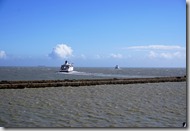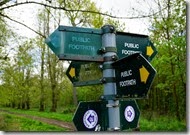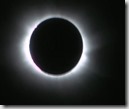 ‘up early and off to Dover this morning for a circle through Belgium, the Netherlands, and north England. The weather started out wintry on the drive east, rainy and windy, ill omen for the ferry crossing. But it opened to sunshine on approach to the refurbished Port entry, maybe a smooth sail?
‘up early and off to Dover this morning for a circle through Belgium, the Netherlands, and north England. The weather started out wintry on the drive east, rainy and windy, ill omen for the ferry crossing. But it opened to sunshine on approach to the refurbished Port entry, maybe a smooth sail?
‘not to be, the wind and waves picked up as we left the harbour, and the boat pitched and rocked for the whole two hours to Dunkirk. I took my favored spot at the fore-windows, a table near the cafe, and kept my eyes on the horizon. unable to do any reading, the mind starts to wander.
What body of water are we crossing to France? The English Channel? Well, mostly. The eastern limit of the channel lies along a straight line stretching from St. Margaret’s Bay, a couple of miles north of Dover Docks, to Wade Lighthouse, a couple of miles east of Calais. Beyond lies the North Sea, with the ferry pretty closely tracing the boundary.
More interesting, this line approximates a shallow ridge that is the remains of the land bridge that once connected Britain to France. At the end of the last ice age, the ridge rose above sea level, damming waters flowing from the Thames and Rhine rivers into the North Sea, forming a large lake behind the retreating ice sheets.
A quarter million years ago, the lake topped, then breached, the chalk ridge. A vast surge of water flowed south and west, scouring the seabed and creating the English Channel. It may have lasted months, yet released a million cubic meters of water per second.
These findings are actually from very recent research (Nature, 2007), a result of improved technology able to map the ocean floor with sufficient resolution (10 cm) to reveal the streamlines and erosion features left by the surge.
Are megafloods still a risk to coastal areas? No, but yes. Other recent research suggests that, although vast reservoirs from melting ice no longer exist, atmospheric rivers resulting from extreme weather conditions may have similar effects.
Geologic studies suggest that massive floods, caused by rainfall alone, have occurred in California every 100-200 years (the last one, ominously, was in 1861). The USGS published a study in 2010 modeling the results of an ARkStorm of this scale, its a fascinating read.
‘Safe across the Channel and tucked into Dunkirk, we made a quick provisioning stop at the Auchen near the port, and motored on towards Maastricht. It was well past dark on arrival, I retrieved the key from Bert and got things unloaded, the apartment opened, and unpacked to settle in. It’s been too long, but (despite a weather eye on the Maas after all of the high-water stories) very nice to be back.






























































